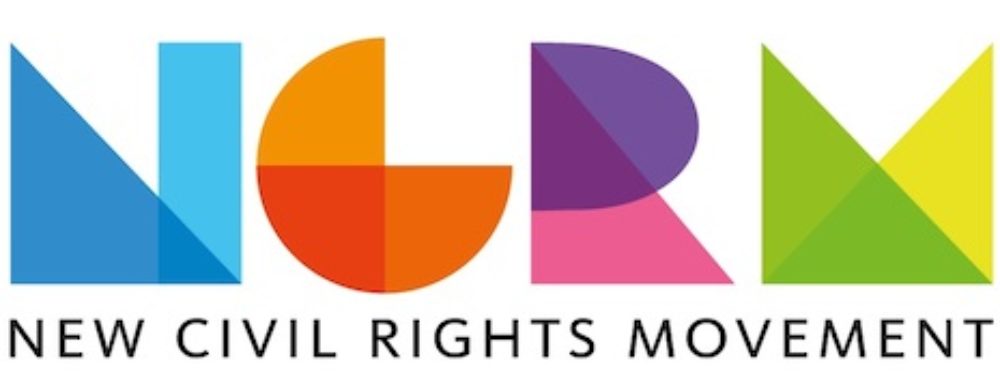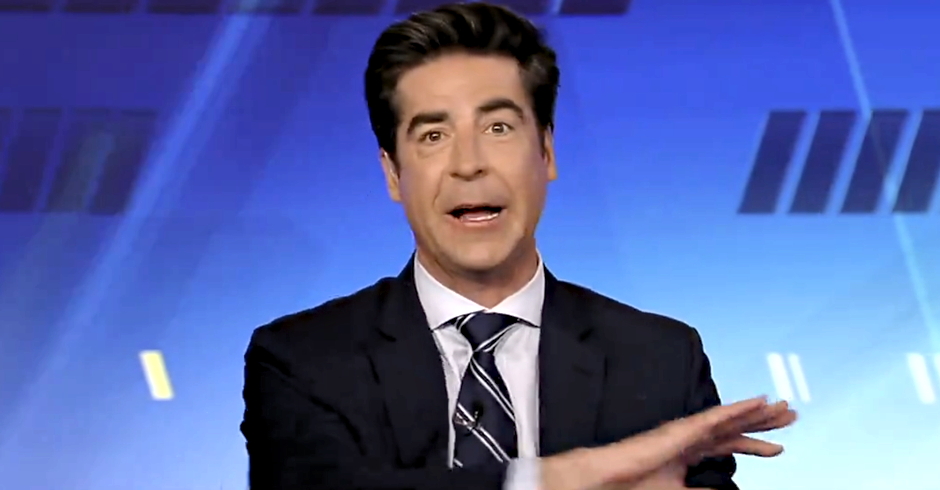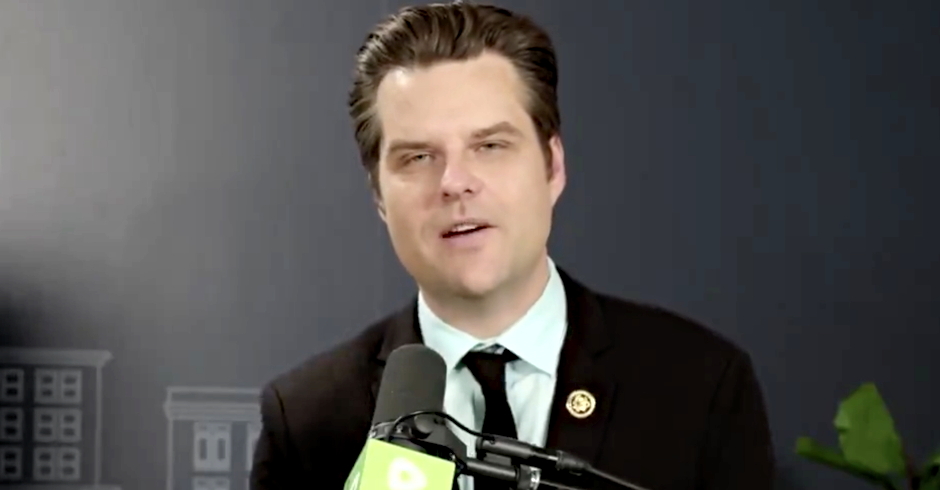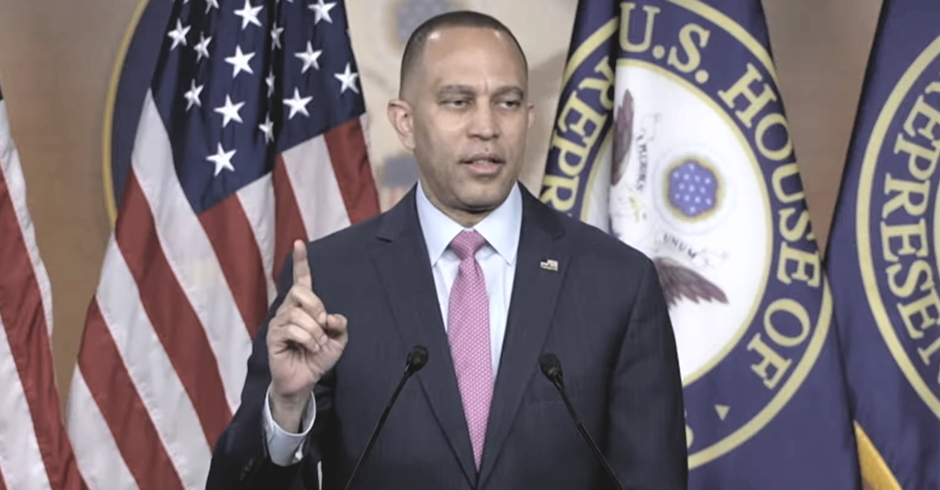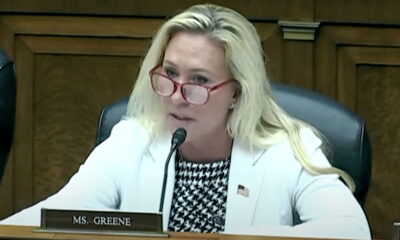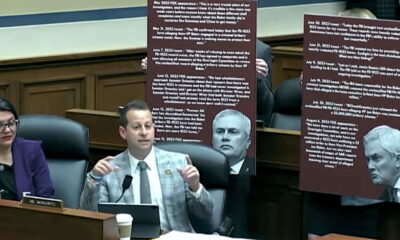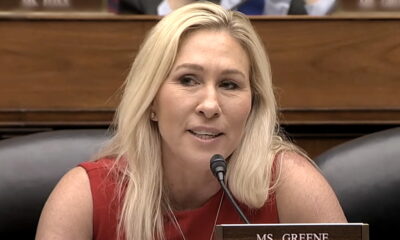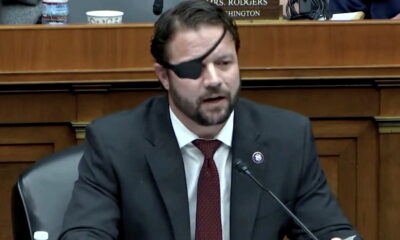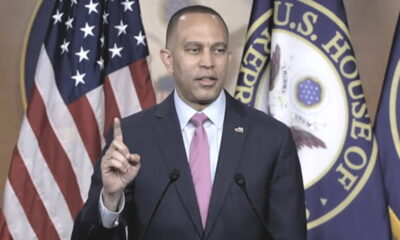News
The Crucial Significance of Proposition 8
Although in 2013 the Supreme Court dismissed the challenge to Proposition 8 on a technicality, the struggle against it nevertheless was pivotal in the quest for equal rights under the law, as well as to the sweeping marriage equality victory that was to come two years later.
On June 26, 2013, the Supreme Court of the United States handed down decisions on two closely watched cases: Hollingsworth v. Perry and United States v. Windsor. The former case was a challenge to California’s Proposition 8, which amended the state constitution to ban same-sex marriage; the latter a challenge to the federal Defense of Marriage Act.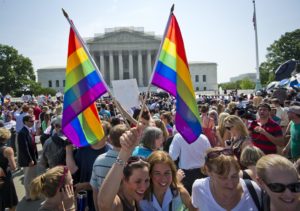
In a 5-4 ruling in Windsor, the Supreme Court struck down DOMA on equal protection grounds, but in a 5-4 ruling in Hollingsworth, the Court decided that the proponents of Proposition 8 lacked standing to appeal the District Court decision that found the amendment unconstitutional. Hence, the epic legal struggle against Proposition 8 ended not with a bang, but with a whimper.
Although the Supreme Court dismissed the challenge to Proposition 8 on a technicality, the long and winding struggle against it nevertheless was pivotal in the quest for equal rights under the law, as well as in the sweeping marriage equality victory that was to come two years later when the Supreme Court ruled in Obergefell v. Hodges that gay men and lesbians had a fundamental right to marry.
Background
Proposition 8, also known as the California Marriage Protection Act, was the ballot proposition that amended the California state constitution to ban same-sex marriage. Passed on November 4, 2008, Proposition 8 added a new provision to the California constitution that declared that “only marriage between a man and a woman is valid or recognized in California.”
Although the amendment was passed in 2008, it had its origins as a reaction to the same-sex marriages performed in San Francisco in 2004. On February 12, 2004, San Francisco Mayor Gavin Newsom announced that the city would issue marriage licenses to same-sex couples. Literally overnight thousands of same-sex couples converged on city hall for their licenses. Riveting footage of couples waiting in line for hours and having their unions blessed on the steps of city hall brought national and international attention.
These marriages, however, were soon nullified by the California Supreme Court, which ruled that Mayor Newsom lacked the authority to issue marriage licenses to same-sex couples.
In the litigation that followed the San Francisco marriages, advocates for same-sex marriage won an impressive victory at the trial court, which ruled that the ban on same-sex marriage was unconstitutional. This decision, however, was soon reversed by the California Court of Appeals.
But on May 15, 2008, the California Supreme Court, in a 4-3 decision, ruled that the prohibition of same-sex marriage was unconstitutional. The Court struck down two state laws that banned same-sex marriage and declared that the state’s domestic partnership law, which was adopted in 2003 and subsequently augmented, was not sufficient to provide equal protection under the law to same-sex couples.
Writing for the majority, Chief Justice Ronald George declared that the right to marry must be accorded to same-sex as well as opposite-sex couples. “The right to marry,” he wrote, “represents the right of an individual to establish a legally recognized family with a person of one’s choice and, as such, is of fundamental significance both to society and to the individual.”
Despite pleas from opponents of same-sex marriage and the attorneys general of eleven states, the Court refused to delay the effect of its decision, so on June 17, 2008, same-sex couples began marrying in California. Since California has no residency requirement, couples from out-of-state were also eligible to marry in the state.
In response to that ruling, proponents of “traditional marriage” launched a petition drive to place on the November ballot a constitutional amendment that would end same-sex marriage in the state.
The Campaign
On June 2, 2008, the proponents submitted more than 1,100,000 signatures, far more than the 700,000 signatures that were required. On August 11, 2008, Proposition 8 was certified for the November election.
Proposition 8 was bitterly contested in an extraordinarily well-financed campaign. The proponents of Proposition 8 raised almost $40 million dollars, largely from members of the Church of Jesus Christ of Latter Day Saints (Mormons) and the hierarchy of the Roman Catholic Church. The campaign against Proposition 8 raised slightly more than $43 million. Donations flooded into both campaigns from all fifty states and more than 20 foreign countries. The $83 million spent in the campaign set a new record for money spent on any social policy initiative in American history.
The campaign included homophobic assertions that allowing same-sex couples to marry would destroy or redefine the institution of marriage, and that it would harm children. Some religious leaders, such as Pastor Rick Warren of the Saddleback Community Church, who would later give the Invocation at the 2008 Inauguration of President Obama, compared homosexuality to pedophilia and bestiality.
Despite polls indicating that Proposition 8 would be rejected, on November 4, 2008 it passed by a margin of 52% for and 48% against. It is believed that the late emphasis by the proponents of Proposition 8 on the alleged dangers of teaching about same-sex marriage in schools may have turned the tide.
Aftermath of the Passage of Proposition 8
After it became clear that Proposition 8 had been passed by the voters of California, a stunned and bitterly disappointed lgbt community took to the streets to protest the injustice of stripping away marriage equality. Many of the protests were directed at Mormon, Catholic, and Evangelical Churches.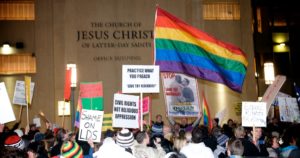
Other protests and boycotts were aimed at businesses whose owners had supported Proposition 8 and at some individual donors to the Proposition 8 campaign.
More than any other event, passage of Proposition 8 sparked a new grassroots activism in the lgbt community. It both embittered and energized the movement for equal rights. A wake-up call to many who had simply assumed that a progressive state like California would vote in favor of equal rights, the passage of Proposition 8 was at once a source of dismay and an incentive to fight back with greater force.
Many of the volunteers who worked in the campaign against Proposition 8 expressed their displeasure at established lgbt organizations, such as the Human Rights Campaign and Equality California, claiming that these organizations had failed to mount an effective campaign against the measure. Mostly ignoring California’s large minority communities, and the conservative strongholds of the state, the anti-Prop 8 campaign issued television ads that failed to showcase actual gay couples or even to highlight Presidential candidate Barack Obama’s statement urging his supporters to vote against Proposition 8.
Among the new activists spawned by the passage of Proposition 8 were Amy Balliett and Willow Witte, who on their blog JoinTheImpact.com issued a call on November 7, 2008 to protest the passage of Proposition 8. The call, which spread like wildfire through the Internet, was answered dramatically. On November 15, demonstrations in support of lgbt equality were held in over 300 American cities.
The direct action group GetEqual was also formed in response to the passage of Proposition 8. Founded by Kip Williams, a Tennessee native who had been active in a number of progressive causes, and Robin McGehee, a self-styled “PTA-mom” from Fresno, California, GetEqual quickly became a pivotal player in grassroots protests against lgbt inequality. Williams and McGehee co-organized the National March for Equality in October 2009 and were especially visible in the protests against the Don’t Ask, Don’t Tell policy that excluded gay men and lesbians from serving openly in the military.
Another organization that became an important player in the wake of the passage of Proposition 8 was the Courage Campaign. Although the Courage Campaign was in existence before the Proposition 8 election and is not focused exclusively on gay rights or marriage equality, it emerged as a significant grassroots and netroots organizing tool dedicated to bringing full equality to California and the nation.
The new activism spawned by our defeat in the Prop 8 campaign bore some resemblance to the AIDS activism of the late 1980s, in that it depended more on direct action protests than on the lobbying practiced by more traditional groups. Like the members of ACT UP in the 1980s, the new activists were confrontational and often angry. But they utilized more fully and effectively social media resources than previous activists. The new activists took advantage of the ability of the blogosphere not only to inform but also to amplify the voices of gay people generally.
The activism inspired by the passage of Prop 8 extended well beyond marriage issues to protesting homophobia generally. The persistence of Don’t Ask, Don’t Tell and the failure of the Obama administration to fulfill many of its campaign promises during its first two years were particular targets against which the new activists mobilized.
Indeed, the great contrast between the old activism and the new was epitomized by several instances in 2009 and 2010 in which President Obama was heckled by newly militant activists as he attended political fundraisers and Human Rights Campaign dinners where he was lauded by members of the old guard of lgbt activism.
The National Equality March on October 11, 2009, which was hastily organized in only six weeks, initially without the support of the major gay rights organizations, was made a success by the activists who had been stirred into action by the passage of Proposition 8.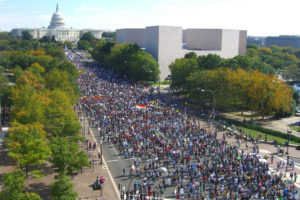
Proposition 8 became effective the day after the election. Even as the supporters of Proposition 8 were celebrating their victory at the polls and angry gay people were demonstrating against the loss, legal groups announced that they were filing suit to declare Proposition 8 invalid.
On November 19, the California Supreme Court accepted three lawsuits challenging Proposition 8 and consolidated them into one, Strauss v. Horton. One of the suits argued that Proposition 8 improperly attempted to undo the state constitution’s core commitment to equality and deprived the courts of their essential role of protecting the rights of minorities. Another argued that Proposition 8 introduced a contradiction into the California State Constitution because it violated the equal protection clause. The other emphasized the danger that all minorities would face if the equal protection clause were subject to weakening by initiatives passed by a mere majority.
In the aftermath of the election, it was not clear how the passage of Proposition 8 affected the legal status of the 18,000 same-sex marriages performed between June 17 and November 4, 2008. The Attorney General of California, Jerry Brown, issued an opinion that the marriages are valid and must continue to be honored by the state of California. However, this opinion was challenged by the supporters of Proposition 8, represented by law professor Ken Starr, who pointed out that the language of the proposition clearly stated that California would “recognize” only marriages between a man and a woman.
In the decision handed down on May 29, 2009, the Court ruled unanimously that the marriages performed during the window when same-sex marriage was legal in California were valid. However, on a 6-1 vote, it upheld Proposition 8, while attempting to narrow the issue to a dispute about a mere word.
The ruling rejected all the arguments put forward by those challenging Proposition 8 and characterized the amendment as merely “carving out a narrow and limited exception” to the state’s protection of same-sex couples, “reserving the official designation of the term ‘marriage’ for the union of opposite-sex couples as a matter of state constitutional law.”
In a spirited dissent, Justice Carlos Moreno deplored the majority ruling, saying that Proposition 8 “strikes at the core of the promise of equality that underlies our California Constitution.” Upholding it, he said, ” places at risk the state constitutional rights of all disfavored minorities.”
Federal Challenge to Proposition 8
Soon after the announcement of the California Supreme Court’s decision upholding the constitutionality of Proposition 8, acclaimed litigators Theodore Olson and David Boies, who had opposed each other in the bitterly contested Gore v. Bush Supreme Court case that decided the 2000 Presidential election, announced that they would take the battle for marriage equality to federal court.
Their announcement was initially greeted less than enthusiastically by the leading gay legal organizations and experts, who judged the move risky and premature. But the quest for a national ruling in favor of equal rights was quickly embraced by most activists.
Indeed, the lawsuit itself arose from the frustration and anger felt by the gay grassroots in the wake of the political impotence demonstrated by the Proposition 8 defeat and the slow pace of change during the disappointing first year of the Obama administration, which not only allowed gay issues such as the passage of the Employment NonDiscrimination Act and the repeal of Don’t Ask, Don’t Tell to languish but also used the power of the Justice Department to oppose gay rights in federal courts.
The Olson-Boies case was supported by the American Foundation for Equal Rights, which had been formed by activist-actor-director Rob Reiner and his wife Michelle and political consultant (and later president of the Human Rights Campaign) Chad Griffin specifically to mount a challenge to Proposition 8 in federal court. To fund the lawsuit, which they hoped would ultimately establish same-sex marriage as a fundamental right throughout the country, they initially reached out to a handful of like-minded millionaires with an interest in equal rights, including Norman Lear, Steve Bing, and David Geffen, who provided approximately five million dollars in seed money.
Others joining the effort were producer Bruce Cohen and screenwriter Dustin Lance Black–who had collaborated on Milk, the Oscar-winning biopic about pioneering gay-rights advocate Harvey Milk.
The suit was brought on behalf of one lesbian couple, Kris Perry and Sandy Stier, who have four children, and a gay male couple, Paul Katami and Jeff Zarrillo. Because the nominal defendants in the case included the Governor of California and one of the plaintiffs is named Perry, the case was initially known as Perry v. Schwarzenegger.
Ironically, the bold litigation advanced first by a handful of gay and straight millionaires actually more closely reflected the mood of ordinary gay and lesbian citizens than the larger, but more timid organizations supposedly representing them.
Historic Trial
The case was filed in May 2009 in the Federal District Court for Northern California and was assigned to the court’s Chief Judge, Vaughn R. Walker, who was appointed to the bench by President George H. W. Bush in 1989.
Because Governor Schwarzenegger and California Attorney General Jerry Brown declined to defend Proposition 8, the ban on same-sex marriage was defended by ProtectMarriage.com, led by chief counsel Charles Cooper, an attorney with a long and ignoble history as an opponent of gay rights.
In the course of the trial, which began on January 11, 2010 and spanned twelve days in January and two days in June 2010, Olson and Boies systematically built their case around the history of marriage, the harm that denial of marriage rights does to gay and lesbian couples and their children, and the irrationality of the ban. Introducing a massive amount of evidence, they demonstrated that the ban was enacted out of animus against homosexuals and that it causes great harm to gay men and lesbians for no rational governmental purpose.
The defense was stymied by the fact that they were unable to argue against same-sex marriage on religious grounds or on the alleged depravity of homosexuals, which they used effectively in the campaign for Proposition 8, since such arguments would not be admissible as appropriate governmental reasons for denying a fundamental right. Instead, they were reduced to arguing that the only purpose of marriage is procreation and that permitting same-sex couples to marry would in some unspecified way contribute to the “deinstitutionalization” of marriage.
Whereas the opponents of Proposition 8 called a number of leading experts, such as distinguished Harvard historian Nancy Cott, to argue in favor same-sex marriage, the proponents called only one self-described “marriage expert,” David Blankenhorn, who, it was revealed, has no Ph.D. in a relevant field and has published only a single peer-reviewed scholarly article, and that article had nothing to do with marriage.
Most damagingly for his reputation as an expert, Blankenhorn was cross-examined by David Boies, who sliced-and-diced his testimony to a fare-thee-well. Despite having asserted over and over again in various speeches and publications that allowing gay men and lesbians to marry would harm the institution of marriage, under oath a tongue-tied Blankenhorn could not articulate what this damage would be. Nor could he cite any harm that the institution of marriage had suffered in those jurisdictions where same-sex couples had been allowed to marry for more than a decade. Nor could he explain straightforwardly his social science methodology.
On August 4, 2010, Judge Walker issued his decision. His 136-page opinion demolished the credibility of the defendants’ witnesses (pointedly remarking, for example, that “None of Blankenhorn’s opinions is reliable”), systematically outlined 80 findings of facts established by the plaintiffs, and concluded unambiguously that Proposition 8 is unconstitutional.
Judge Walker declared that “the evidence shows Proposition 8 does nothing more than enshrine in the California Constitution the notion that opposite-sex couples are superior to same-sex couples. Because California has no interest in discriminating against gay men and lesbians, and because Proposition 8 prevents California from fulfilling its constitutional obligation to provide marriages on an equal basis, the court concludes that Proposition 8 is unconstitutional.”
Judge Walker endorsed the contention of Olson and Boies that the ban on same-sex marriage violates the due process and equal protection clauses of the Fourteenth Amendment to the Constitution of the United States. In reaching this conclusion, he found that, although sexual orientation is entitled to heightened scrutiny, Proposition 8 fails to survive even rational basis review. He further found that the ban discriminates on the basis of sex as well as sexual orientation. He described domestic partnerships as a “substitute and inferior institution.”
Judge Walker emphatically rejected the defendants’ argument that the purpose of marriage is procreation, observing that “states have never required spouses to have an ability or willingness to procreate in order to marry.” He described the exclusion of same-sex couples from marriage “as an artifact of a time when the genders were seen as having distinct roles in society and in marriage,” and declared, “That time has passed.” The judge dismissed the idea that a referendum of voters is somehow sacrosanct. The referendum’s outcome was “irrelevant,” he said, because “fundamental rights may not be submitted to a vote.”
In his findings of fact, Judge Walker established that same-sex couples are identical to opposite-sex couples in their ability to form successful marital unions and raise children.
The editorial page of the New York Times described Judge Walker’s decision as both “an instant landmark in American legal history” and also “a stirring and eloquently reasoned denunciation of all forms of irrational discrimination, the latest link in a chain of pathbreaking decisions that permitted interracial marriages and decriminalized gay sex between consenting adults.”
Appeal to the Ninth Circuit
Judge Walker’s historic ruling was quickly appealed to the Ninth Circuit Court of Appeals. On August 16, 2010, the Ninth Circuit Court of Appeals stayed Judge Walker’s decision pending review by the appellate court. It expedited consideration of the appeal and ordered that briefs address the question of whether proponents of Proposition 8 have standing to appeal.
On December 6, 2010, a three-judge panel of the Ninth Circuit heard oral arguments in the case. The judges asked both sides to discuss not only the substantive issues at dispute, but also the question of standing. The standing issue was important because neither the Governor nor the Attorney General of California believed Proposition 8 to be constitutional and refused to appeal on behalf of the state.
On January 4, 2011, the panel issued a unanimous ruling to certify to the California Supreme Court the question of whether Proposition 8’s proponents had standing to pursue the case. The certification process enables federal courts to defer to state courts on questions of state law. The question here was whether California law recognizes the right of the proponents of a ballot initiative to defend its constitutionality if state officials decline to do so.
The Ninth Circuit was expected to issue its ruling in early 2011. However, the certification to the California Supreme Court delayed the ruling for eleven months.
Finally, on November 7, 2011, the California Supreme Court decided that the proponents of voter-enacted legislation should have the right to defend such legislation in cases where the state declines to do so.
Meanwhile, the proponents of Proposition 8 moved that Judge Walker’s decision be vacated on the grounds that he should have recused himself since he is gay and in a relationship. That argument was rejected by the District Court, but was accepted by the Ninth Circuit panel and consolidated with the main case.
Finally, on February 7, 2012, in a narrowly focused decision, the three-judge panel ruled on a 2-1 vote that Proposition 8 is unconstitutional. In the majority opinion written by Judge Stephen Reinhardt, the Court declared, “All that Proposition 8 accomplished was to take away from same-sex couples the right to be granted marriage licenses and thus legally to use the term ‘marriage,’ which symbolizes societal and state recognition of their committed relationships. Proposition 8 serves no purpose, and has no effect, other than to lessen the status and human dignity of gays and lesbians in California, and to officially reclassify their relationships and families as inferior to those of opposite-sex couples. The Constitution simply does not allow for ‘laws of this sort.'”
The Court rejected the claim that Judge Vaughn Walker should have recused himself because he is a gay man in a relationship and held that ProtectMarriage had standing to defend Proposition 8 when the Attorney General and Governor of California declined to do so.
The decision on the merits of the case relied heavily on Romer v. Evans, the landmark United States Supreme Court ruling in 1996 that invalidated a Colorado constitutional amendment that prohibited municipalities and state agencies from granting lesbians and gay men “protected status.”
The decision evaded the question of whether same-sex couples have a fundamental right to marry and purposely declined to address many of the questions raised by Judge Walker’s more expansive decision. Rather, it focused narrowly on the unique legal situation in California in which the right of same-sex partners was extended by the California Supreme Court and then rescinded by a plebiscite.
Judge Reinhardt framed the issue this way: “The Equal Protection Clause protects minority groups from being targeted for the deprivation of an existing right without a legitimate reason. . . . Withdrawing from a disfavored group the right to obtain a designation with significant societal consequences is different from declining to extend that designation in the first place. . . . The action of changing something suggests a more deliberate [invidious] purpose than does the inaction of leaving it as it is.”
Proposition 8 at the Supreme Court of the United States
However, same-sex weddings did not resume in California immediately. The proponents of Proposition 8 sought an en banc review by the Ninth Circuit. When that was denied, they then sought review by the Supreme Court of the United States. Most observers thought that the Supreme Court would deny review and that same-sex marriages would quickly resume in California. However, in something of a surprise, on December 7, 2012, the Supreme Court announced that it would hear the case, now known as Hollingsworth v. Perry.
By the time the Supreme Court heard Hollingsworth the country was quite different than it had been when Proposition 8 was passed in 2008. Polls in California showed that the amendment would not be ratified were it to appear on the ballot again. Don’t Ask, Don’t Tell had finally been repealed. And the Obama administration had become supportive of the right to marry. Not only had the President himself endorsed marriage equality, but he and Attorney General Holder had directed the Justice Department not to defend DOMA and other laws that discriminate against lgbt citizens. Rather than impeding the quest for equality as it had earlier, the Justice Department was now focused on advancing equal rights.
In addition, in the historic election of November 6, 2012, President Obama was decisively re-elected and voters in Maine, Maryland, and Washington state ratified marriage equality, while voters in Minnesota rejected a ban on same-sex marriage, and voters in Iowa refused to recall a state supreme court justice because he joined a marriage equality decision. The long streak of ballot losses for marriage equality had been broken and polls indicated that a majority of Americans were now in favor of equal marriage rights.
The change in the country’s attitude toward marriage equality and lgbt rights in general was unquestionably influenced by the increased activism sparked by the passage of Proposition 8.
On February 21, 2013, attorneys Olson and Boies filed their main brief in the case. In their 63-page plea, the attorneys built a sweeping argument for same-sex marriage as a fundamental right, while also arguing more narrowly that Proposition 8 was motivated by animus. Olson and Boies also eviscerated the argument put forward by the proponents of Proposition 8 that marriage is exclusively about procreation. “Proponents,” they wrote, “accuse Plaintiffs (repeatedly) of ‘re-defining marriage.’ But it is Proponents who have imagined (not from any of this Court’s decisions) a cramped definition of marriage as a utilitarian incentive devised by and put into service by the State–society’s way of channeling heterosexual potential parents into ‘responsible procreation.'”
On March 26, 2013, the Supreme Court heard oral arguments pertaining to Proposition 8. The most striking impression left by the arguments was how weak the justification for Proposition 8 remained. The proponents of California’s ban on same-sex marriage could articulate no compelling reason for denying equal rights to gay and lesbian citizens. On the other hand, the hearing also left unclear whether the Supreme Court had the courage to make a definitive ruling that would establish same-sex marriage as a fundamental right across the country.
In his oral argument, Theodore Olson emphasized that marriage is a personal individual liberty and a fundamental right. In a bid for a broad decision by the Court, he said that any ban on same-sex marriage violates due process. Olson forcefully described the effects of Proposition 8: “It walls off gays and lesbians from marriage, the most important relation in life,” he said, “thus stigmatizing a class of Californians based upon their status and labeling their most cherished relationships as second-rate, different, unequal and not O.K.”
Solicitor General Donald Verrilli appeared before the Court to argue on behalf of the Obama administration that Proposition 8 should be subjected to heightened scrutiny. However, very little time was devoted to the question of scrutiny. Most of the hearing was devoted to the question of standing and to the scope of a possible ruling invalidating Proposition 8.
On the basis of the oral arguments, most Court watchers predicted that marriage equality would soon return to California. The real question, however, was whether Proposition 8 would be invalidated on the basis of a lack of standing or some other procedural question or as the result of a broad decision that extended the fundamental right of marriage to same-sex couples throughout the nation. That question was answered on June 26, 2013, the final day of the Supreme Court’s term, when it released its rulings on cases challenging the Defense of Marriage Act and California’s Proposition 8.
The Proposition 8 decision was, paradoxically, at once a major victory for marriage equality in that it returned marriage equality to the nation’s largest state and a disappointing failure in that the Court refused to declare a fundamental right to marry the person one loves. Rather than reach the merits of the case, the Supreme Court, in a decision written by Chief Justice Roberts and joined by an unusual coalition of Justices Scalia, Ginsburg, Breyer, and Kagan, ruled that the proponents of Proposition 8 lacked standing to appeal Judge Walker’s opinion.
The Chief Justice noted early in his opinion, “Federal courts have authority under the Constitution to answer such questions [of constitutionality] only if necessary to do so in the course of deciding an actual ‘case’ or ‘controversy.’ . . . ” In order for the proponents of Proposition 8 to have standing to appeal in federal court, they would have had to demonstrate “a concrete and particularized injury that is fairly traceable to the challenged conduct, and is likely to be redressed by a favorable judicial decision.”
Roberts pointed out that the District Court had not ordered the proponents to do or refrain from doing anything. Their only interest in having the District Court order reversed was to vindicate the constitutional validity of a generally applicable California law, and they were neither agents of the state nor authorized to represent the state. “We have never before upheld the standing of a private party to defend the constitutionality of a state statute when state officials have chosen not to. We decline to do so for the first time here.”
Thus, Judge Walker’s historic decision declaring Proposition 8 unconstitutional became the governing decision in regard to Proposition 8 and gay and lesbian couples soon began marrying in the Golden State. Since the decision was from a District Court rather than an appellate court, it applied only to California and would have only limited precedential value. Still because the decision is carefully considered and based on a thorough trial, it proved influential in subsequent legislation challenging state bans on same-sex marriage.
Conclusion
The litigation over Proposition 8 did not lead to the broad ruling that the American Foundation for Equal Rights had hoped. However, Chief Justice Roberts’ ruling did validate a point that marriage equality activists had made repeatedly: allowing gay and lesbian couples to marry harms no one, not even the most ardent opponents of same-sex marriage.
Moreover, the long battle against Proposition 8 is significant beyond the Supreme Court ruling in Hollingsworth. The struggle both energized lgbt activists and served the important purpose of educating the public about marriage equality and gay rights generally. The exhaustive trial conducted by Judge Walker demonstrated clearly the harm caused by the discriminatory proposition and also the irrationality of the discrimination. The proponents of Proposition 8 could not find a rational basis to justify the exclusion of gay and lesbian couples from civil marriage.
Although the Supreme Court prevented a live broadcast of Judge Walker’s trial, and the Ninth Circuit later refused to release videos of the trial, it nevertheless became vividly familiar to a large audience when AFER board member Dustin Lance Black wrote the play 8, which portrayed the actual events and testimony of the trial.
As Black remarked to the Associated Press on the eve of the play’s reading on Broadway, the trial “was the first time I’ve ever seen our case argued by the most capable lawyers in the world, in a court of law where the other side had to raise their right hand and swear to tell the truth . . . . It killed me to think that this would only live inside the courtroom for the dozens to see and not the country to see . . . . We immediately started to figure out, ‘How do we get this truth out there?'”
Star-studded casts presented the play not only on Broadway but also in Los Angeles and to a worldwide audience on YouTube. In addition, AFER and Broadway Impact released and licensed the play for readings nationwide on college campuses and in community theaters free of charge.
As a result of Griffin’s mastery of promotion and marketing, and his ability to marshal the support of Hollywood celebrities, the Proposition 8 litigation received far more media attention than any previous gay rights case, including the case challenging the Defense of Marriage Act brought by Roberta Kaplan on behalf of Edith Windsor that was decided on the same day as Hollingsworth. Superstar attorneys Olson and Boies became familiar faces on news shows as they eloquently argued the case for marriage equality; and the attractive and sympathetic plaintiffs in the case exemplified concretely the love and commitment that motivated the quest for equal rights. By any standard, the AFER team succeeded in winning the public relations battle against the opponents of equality.
On the surface, the Proposition 8 case seemed by far the more ambitious of the two cases decided on June 26, 2013. Its plaintiffs were asking for a broad ruling establishing the right to marry, whereas the Windsor case sought only that same-sex married couples be treated equally by the federal government. Although he dissented in the DOMA ruling, Chief Justice Roberts suggested that the Obama administration should have settled the case without appealing it to the Supreme Court.
Although the 5-4 decision in Windsor, written by Justice Kennedy and joined by Justices Breyer, Ginsburg, Kagan, and Sotomayor, did not declare that gay and lesbian couples had a fundamental right to marry, it is full of Justice Kennedy’s characteristic concern for individual dignity and is solidly based in equal protection analysis. It provided the rationale to argue for a fundamental right to marry in subsequent suits.
It is worth noting that the decision in Windsor closely echoes arguments that had been made forcefully in the Proposition 8 case. Unquestionably, the two cases jointly influenced members of the Court. Roberta Kaplan herself later observed that “had the Prop 8 case not been there, maybe [the Supreme Court majority] would not have ruled so expansively in the Windsor case, because clearly they were trying to send a signal on the larger question.”
In addition, it is relevant to note that Justice Kennedy voted with the minority that wanted to reach the merits of the Proposition 8 case. It is certainly conceivable that had he prevailed on that point, the decision in the Proposition 8 case might have yielded the major ruling that Olson and Boies and AFER sought and that Justice Kennedy wrote two years later in Obergefell.
I
Enjoy this piece?
… then let us make a small request. The New Civil Rights Movement depends on readers like you to meet our ongoing expenses and continue producing quality progressive journalism. Three Silicon Valley giants consume 70 percent of all online advertising dollars, so we need your help to continue doing what we do.
NCRM is independent. You won’t find mainstream media bias here. From unflinching coverage of religious extremism, to spotlighting efforts to roll back our rights, NCRM continues to speak truth to power. America needs independent voices like NCRM to be sure no one is forgotten.
Every reader contribution, whatever the amount, makes a tremendous difference. Help ensure NCRM remains independent long into the future. Support progressive journalism with a one-time contribution to NCRM, or click here to become a subscriber. Thank you. Click here to donate by check.
 |
